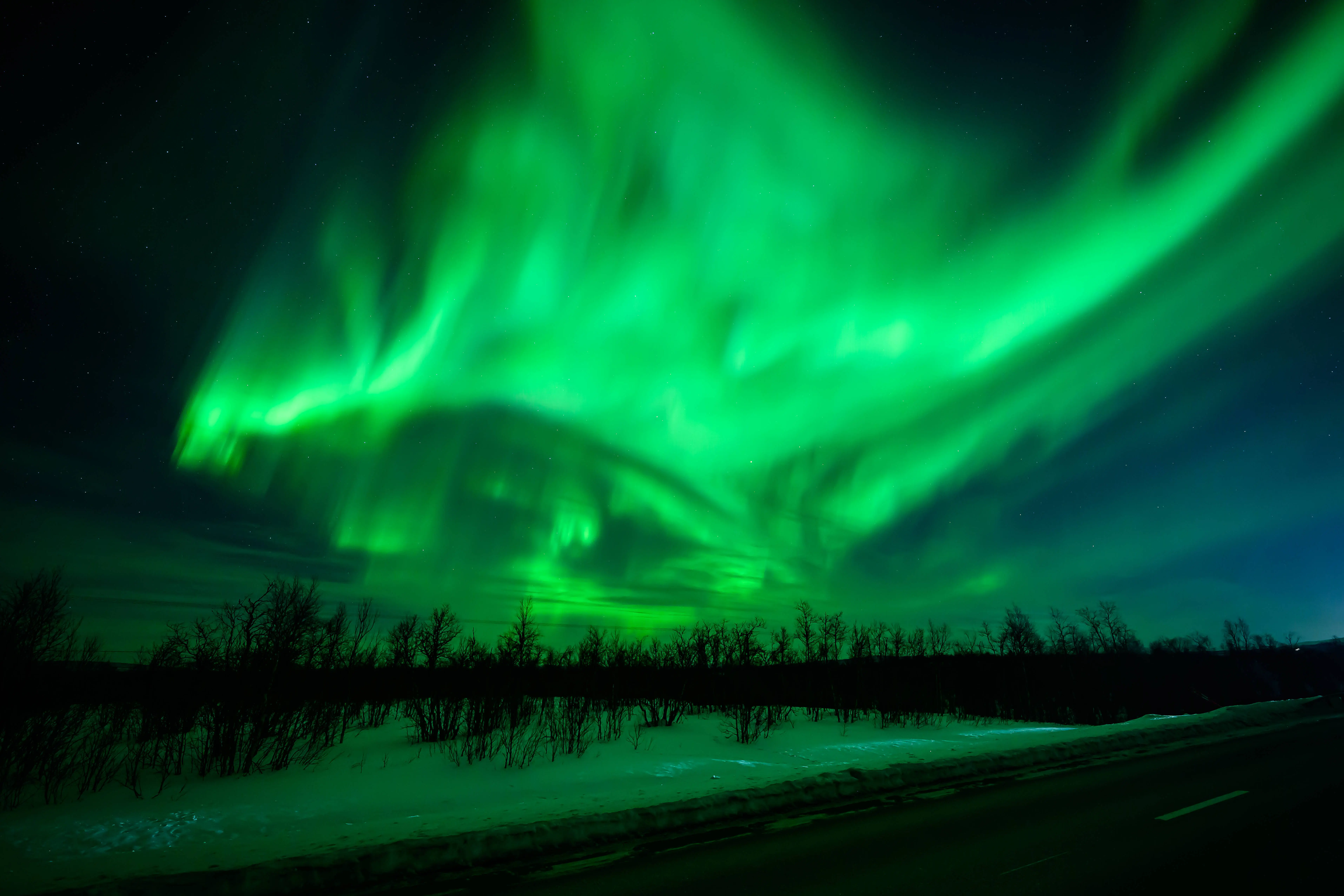Northern lights might light up skies in parts of 10 U.S. states tonight
-
 Northern Lights (Image via Getty)
Northern Lights (Image via Getty)Northern lights may appear in the night sky on October 29, 2025, across ten states in the United States, from Alaska to Maine, as geometric storm conditions are likely to continue.
It may be a direct consequence of a stream of fast solar wind from a large Earth-facing coronal hole that continues to buffet Earth’s magnetic field.
NOAA’s Space Weather Prediction Center, as well as the U.K. Met Office, predicted a possible minor (G1) geomagnetic storm condition on October 29 and 30.
According to their forecast, it is likely that the northern lights may extend into latitudes around Scotland or areas in the northern part of the United States.
However, it all depends on the timing and strength of the impending solar wind.
Solar wind from a large coronal hole, combined with a weak coronal mass ejection, may cause solar wind speeds to escalate and hit the 500-600 km/s mark during October 29 and 30.
If the conditions present themselves, the northern lights will appear across, marking an opportune moment for aurora chasers.
Which ten U.S. states are most likely to witness the northern lights
According to the NOAA aurora forecast map, there are ten U.S. states where the northern lights may appear fully or partially above the aurora view line.
The following are the predictions:
-
Alaska
-
North Dakota
-
Montana
-
Minnesota
-
Wisconsin
-
Idaho
-
Washington
-
South Dakota
-
Michigan
-
Maine
That said, auroras can be highly unpredictable, and without proper additional conditions, enthusiasts may miss witnessing the moment.
Apart from being within the view line, aurora chasers will need cloud-free skies, minimal light pollution, and a clear view in the north direction.
How to glimpse the northern lights
Due to its unpredictability, auroras can be hard to catch even with the right settings. However, a few ways may improve the chances of spotting the northern lights.
Enthusiasts will need to head to a dark location, essentially far away from the city lights, to be present in an environment uninterrupted by artificial lights.
The next step will include finding a north-facing view with a clear horizon. While there is no fixed timing for the northern lights to appear, it is likely that they appear anytime between midnight and 2 a.m.
However, it is recommended to be alert as soon as the sun starts to set and the sky begins to darken. Auroras appear in waves and can look faint at first.
According to Space.com, downloading a space weather app that offers aurora forecasts is highly recommended.
Apps like My Aurora Forecast & Alerts and Space Weather Live, which are available for both Apple and Android users, can be used to track the event and get a better understanding of the conditions.
What is the aurora borealis
According to the official website of NASA, the aurora borealis, or northern lights are:
“Colorful, dynamic, and often visually delicate displays of an intricate dance of particles and magnetism between the Sun and Earth called space weather.”
When energetic particles from space collide with atoms and molecules, they create a “colorful glow” which is known as auroras.
The sun continuously produces solar wind, which is an outflow of charged particles into the atmosphere.
When the solar wind comes in contact with Earth’s magnetic field, it often deposits and accumulates energy there.
It is when the energy is finally released that auroras are caused.
Stay tuned for more updates.
TOPICS: Northern Lights, Aurora Borealis, NASA
-